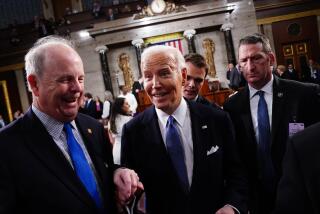Rare good news on Alzheimer’s
Five million Americans have Alzheimer’s, a scourge of a disease that is hard to diagnose, harder to predict and, so far, unpreventable and incurable. There is no chemotherapy for Alzheimer’s. And the drugs that are currently prescribed are more like bandages on a bleeding wound than the powerful cocktails that tame HIV.
The greatest risk factor for the disease is simply getting old — an unsettling thought for the first wave of baby boomers turning 65 this year. One study estimates that between 7,000 and 10,000 baby boomers will hit that milestone every day for the next 19 years.
But there was some heartening news this week: An advisory committee to the FDA unanimously approved the use of a chemical dye that highlights, on imaging scans, the plaque in the brain that is the telltale sign of encroaching Alzheimer’s.
This may not seem like really good news. A test reveals that you’ll get a disease that steals your memory and, ultimately, leaves you dysfunctional, and there’s little you can do except maybe set aside some money for future caregivers. Not to mention the ethical problems: Could you lose your job if the test results become known? Or your health insurance?
Those thorny issues will all have to be dealt with. But it will be worth it. Scientists say that identifying the disease in its early stages is important in treating it. Experts believe that changes in the brain start as long as 20 years before a person shows signs of Alzheimer’s.
Ron Reagan claims in his new book about his father that the late president showed signs of Alzheimer’s before leaving office. That has been vigorously denied by former aides. And Reagan the younger is not a doctor. But his father, who died of the disease in 2004, remains one of its most public faces.
Today, every statistic about Alzheimer’s is up. Heart disease still kills more people than any other disease, but the number of deaths attributed to it went down 11.1% from 2000 to 2006. In that period, the number attributed to Alzheimer’s went up 46.1%.
According to statistics from the National Institutes of Health, estimated funding for Alzheimer’s in fiscal year 2011 is $480 million. For cancer, it’s more than $6 billion. Only a small percentage of worthy Alzheimer’s research projects receive NIH funding. That should change. Meanwhile, more people — both diagnosed and not at risk — should participate in current research studies that need more subjects so that brain scan diagnosis won’t inevitably mean a grim demise.
More to Read
A cure for the common opinion
Get thought-provoking perspectives with our weekly newsletter.
You may occasionally receive promotional content from the Los Angeles Times.






